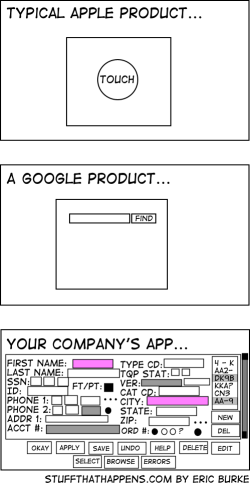This is the networked professional’s web 2.0, via Sebastien Sauteur I found Vincenzo Cammaratas master thesis, called “Wikibility of Innovation Oriented Workplaces – The CERN Case” (pdf). Here’s the abstract, I have skimmed through the +100 pages over the weekend and recommend it basically:
[…] Wiki systems and other social networking applications
represent an important shift on the way in which people work: at the opposite of other previous IT technologies in this field, the Enterprise 2.0 is not about simple devices of office automation, but requires (and brings to) a dramatic organizational culture shift. In particular Wiki offers new possibilities and opportunities in order to exploit in a more effective way the entire potential of the collaborative work coming from the active participation of all the individuals that are present in a workplace.This dissertation wants to contribute to the current debate on the cultural shift that the introduction of this tool in a workplace is able to produce: we will see that, for a Wiki – or any Enterprise 2.0 tool – being effective it has to activate a virtuous circle able to create new knowledge.
The peculiarity of this work is that it focuses on this particular cultural
aspect and aims to define the features of the ideal workplace that can optimize wiki use in order to be innovation oriented and “hence” competitive.Once identified these “cultural key drivers” and defined Wikibility as the
cultural attitude of an environment able to make the Wiki use in a workplace effective, the further scope of this thesis is to measure the presence of this Wikibility mind-set and to propose a new tool (not yet validated). This sort of cockpit could be useful for the management that, interested to promote a better and true collaborative approach to work, wants to be sure on the effective support in order to produce true innovation.
I like the goal of his work and am absolutely sympathetic (hmm, wikibility, yes, a neologism but I dig it) – but I am also a bit cautious. “Measuring” organizational culture and designing a cockpit or “dashboard” that enables management to steer (and control) processes of organizational change sure is attractive, as is the vision of an “ideal wiki situation” where implementation of enterprise 2.0 is naturally, but I doubt that the CERN situation nor the learnings made there can be replicated in “normal organizations”. And I sure don’t buy the idea that a fitting organizational culture must be present in advance, as “a preliminary workplace attitude”, put forth here (see slide 15):
Of course it helps if the people “grok it”, and it helps a lot if management gets it too, but otherwise I side with Mike Gotta (“Enterprise 2.0: Culture Required?“)
and Michael Idinopulos (“Culture is a destination not a starting point“).
Mike, (who referred to Michael’s post) says:
You can be very successful in use tools associated with E2.0 (blogs, wikis, tag and social bookmarks, etc) even in situations where culture is “unhealthy” – and when participation is more or less “directed” by role, workflow, and functional duties
Michael entering stage too:
[…] There is a view out there that an organization needs to have a “culture of collaboration” culture in order to successfully employ wikis and other Enterprise 2.0 tools.
That view is dead wrong. I’ve seen wikis thrive in un-collaborative cultures. I’ve seen wikis fail in collaborative cultures. I’ve seen wikis thrive in an organization alongside failing wikis in the same organization.
Even within “non-collaborative” cultures, people have to work with other people. We’ve seen lots of examples of wikis being introduced into those cultures in very safe ways – to streamline and simplify existing business interactions within existing organizational silos.
He also elaborates on an example of how social software inside an organization can act as a change catalyst – yes, the way I see it is that social software is both a driver and an enabler (or infrastructure) of organizational change.
